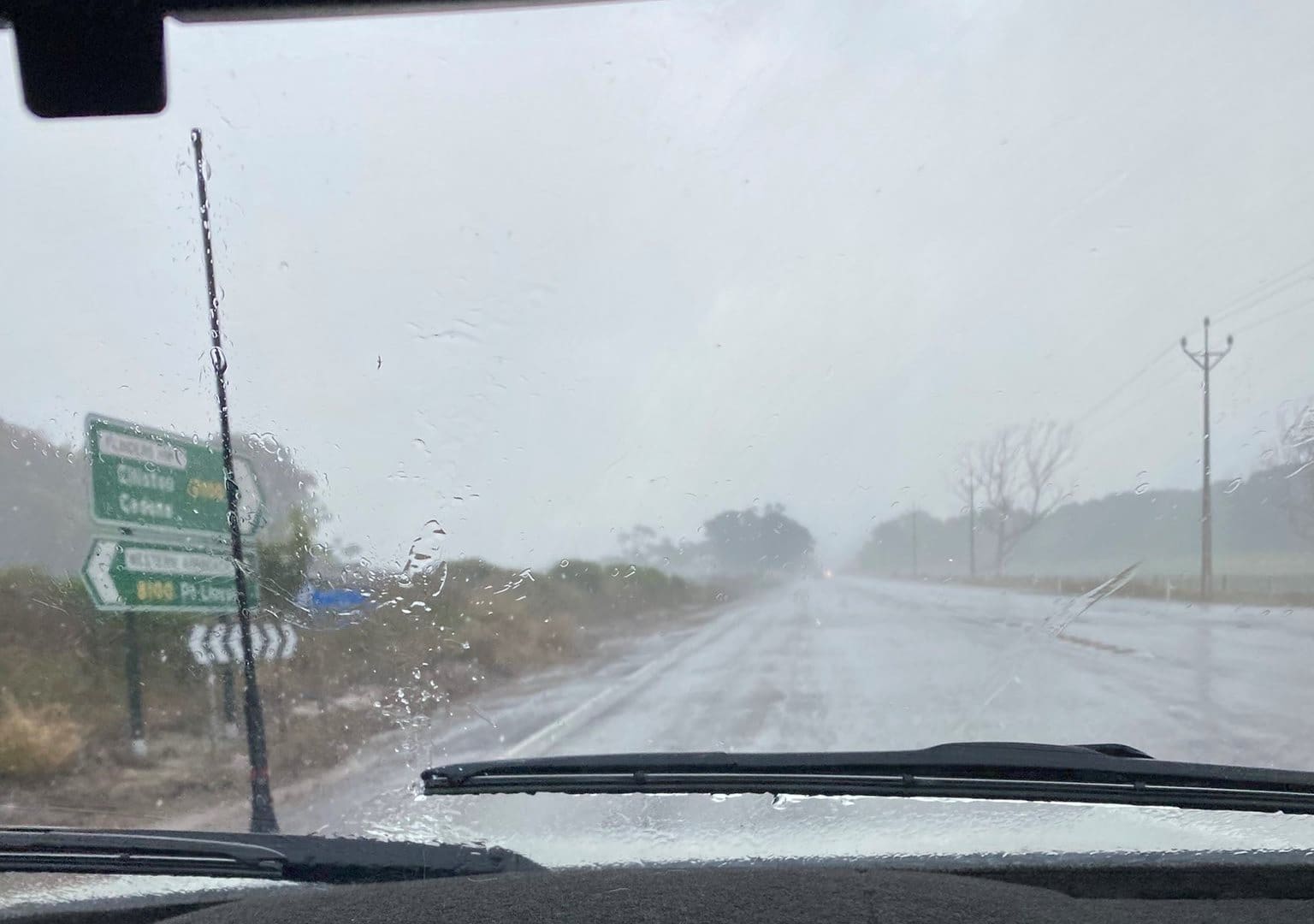
Rain across most SA and Vic cropping districts since Friday has prompted the emergence of many dry-sown crops, including this barley at Freeling, 60km north of Adelaide. Photo: Corbin Schuster
WEEKEND rain over most South Australian and Victorian cropping regions has boosted prospects for an at least average winter crop, with some farms receiving their biggest single rain event in two years.
Some districts missed this rain, but are hopeful a follow-up event forecast for next week will get their crops up away before the ideal germination window closes ahead of the winter solstice.
Almost all cereal, canola and lentil crops in SA and Vic have been sown dry, and some have already emerged on the rain which started falling on Friday.
Prior to the rain, around 90 percent of crops in both states have been planted, with only around 10pc germinated.
The rain has also sparked pasture growth, and livestock are expected to return to grazing after what for many has been 12 months or more of hand feeding.
In SA, highest registrations in the week to 9am today include:
- Adelaide Plains to Mid North: Clare 20mm; Mintaro 29mm; Roseworthy 17mm; Saddleworth 26mm;
- Eyre Peninsula: Cleve and Kimba 17mm;
- Murray-Mallee: Alawoona and Karoonda 14mm; Pinnaroo 19mm;
- South East: Keith 38mm; Padthaway 35mm;
- Upper North: Melrose 38mm and Wirrabara 41mm;
- Yorke Peninsula: Kadina and Minlaton 17mm.
In Vic, rain missed a number of Mallee gauges, but was mostly general in other areas, and falls include:
- Lower and Upper North: Bet Bet 26mm: Dunolly 29mm; Echuca 17mm; Kerang 24mm;
- Mallee: Murrayville 14mm; Swan Hill 17mm; Woomelang 12mm;
- Western District: Hamilton 44mm; Mortlake 80mm; Inverleigh 61mm;
- Wimmera: Horsham 20mm; Kanagulk 40mm; Nhill 25mm, and Warracknabeal 20mm.
Rain has lightened the mood of producers and agronomists, although follow-up rain will be needed in coming weeks to consolidate prospects for crops and pastures.
South Australia
At Freeling in SA’s Barossa region, hay and grain-grower Corbin Schuster said the family’s farm just received 24mm, its biggest rain event in eight months.
“Since it started raining on Friday, everything’s germinated and started to emerge, and further north, some areas have had their biggest rain in two years,” Mr Schuster said.
“Give it a week and the countryside will be green.”
“It’s been perfect for everyone who’s sown, and has spent huge dollars on pre-emergent herbicides.”
SA’s and Vic’s fodder gap is expected to continue into early spring, but the end is in sight for those who have retained livestock through what for many is the longest drought in living memory.
“People are saying it will be six to 10 weeks until sheep can go into paddocks.”
Mr Schuster said talk was filtering through of a “huge establishment” of hard-seeded varieties like medic in grazing paddocks, some of which have been locked up for more than 18 months.
Early destocking of paddocks and minimum-till and no-till cropping systems are expected to allow the country to respond quickly to rain.
“What we’ve done with those systems is create nice water-harvesting furrows.”
On Eyre Peninsula, Agfert’s chief officer business growth and relations Tim Gurney said some growers have a portion of their crop left to plant, but most are well through or finished.
“Lower EP looks green from a rain five weeks ago, and this rain will kick on that, and the mid and Upper EP,” Mr Gurney said.
“There’s no subsoil moisture, so they’ll need follow-up.”

Recent days have brought welcome rain to many parts of SA, including the Lower Eyre Peninsula.
Victoria
At Horsham, SparkeAg principal Matthew Sparke said some parts of the Mallee and Wimmera missed out on a germinating rain, and were now turning hopes to the next front due through next week.
However, the weekend’s rain has fallen not a moment too soon for the vast majority of the state’s dry-sown crops.
“A fair few places are away now, but not everyone’s been lucky, and there’s only a green tinge to see so far,” Mr Sparke said.
“It’s going to get us away and we can live on showers for a little while, but it needs to get properly wet soon.”
“Pasture response will be slow but coming along.
“It’s turned cold, and the requirement for stock is going to get huge.”
Grain Central: Get our free news straight to your inbox – Click here